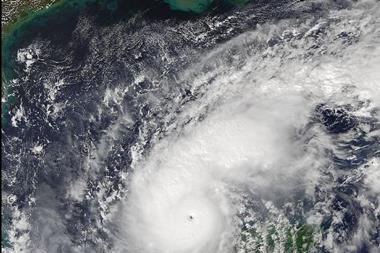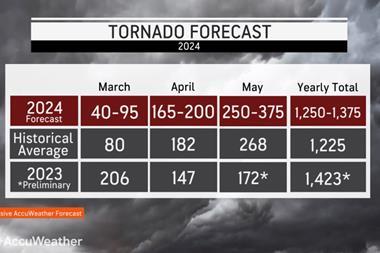Global warming is just one factor provoking the rise in natural disasters. If we want to avoid ‘no coverage’ regions, we must invest in risk mitigation
Economic losses from natural and manmade disasters in 2019 were $146 billion in 2019, according to Swiss Re sigma, down from $176 billion in 2018 and the previous 10-year annual average of $212 billion. Of last year’s total, just $60 billion of the losses were covered by insurance, pointing to a ‘protection gap’ of exposures that are uninsured.
The Swiss Re Institute expects global warming will cause a growing intensity and frequency of severe weather events in the future, but also to more uncertainty in their assessment of those events. Hurricanes Harvey, Irma and Maria caused an estimated $92 billion in insured losses, making 2017 the second costliest North Atlantic hurricane season, according to sigma. “The North Atlantic seems to remain in an active phase of hurricane activity, irrespective of climate change influences that may come on top of it,” it states.
While individual storms are never caused by one factor alone, stressed the study from 2018, “some of the characteristics observed in HIM are those predicted to occur more frequently in a warmer world”. In particular, it notes the high level of rainfall over Houston and hurricane intensification. Other trends, such as sea level rise and urbanisation, are contributing to growing exposures, particularly in ‘peak zone’ regions, such as the US, Japan and China coastlines.
“Looking at the evolving risk landscape, it is clear that climate change is not the only driver, it’s one of them,” says Martin Bertogg, head of catastrophe perils at Swiss Re Institute. “Urbanisation is one trend and globally, we see a migration of people to the coast - not just in Southeast Asia, but also in North America and elsewhere.”
“We see other risk factors coming at quite some magnitude, and as a Corporation that’s our challenge,” he continues. “To maintain our product in a sustainable way when faced with a risk which is accelerating.”
Going forward, insurability is one topic, explains Bertogg. Ultimately, some regions may be considered ‘no go’ areas because the risk is simply too high for re/insurance companies to take on. Or it is not economically viable for companies to locate their operations there. “It won’t happen immediately, but at some point in time too much premium will have to be paid at a specific location,” thinks Bertogg.
“Insurance cannot cope with ‘chronic risk’… something which is just persistently there. So if sea level rises by half a metre, that’s not something we can just address with insurance.”
This is where risk mitigation and investment in flood defences, sea walls, more robust architecture and stronger infrastructure may hold the answer. In high-income flood-prone countries, such as the Netherlands, there is sustained investment in a sophisticated system of flood barriers and the construction of amphibious buildings for instance.
“Some form of risk mitigation and precaution measures, particularly against chronic risks such as the persistence of flooding for example, will occur. And this will help to ensure the insurability of our product going forward.”




















No comments yet